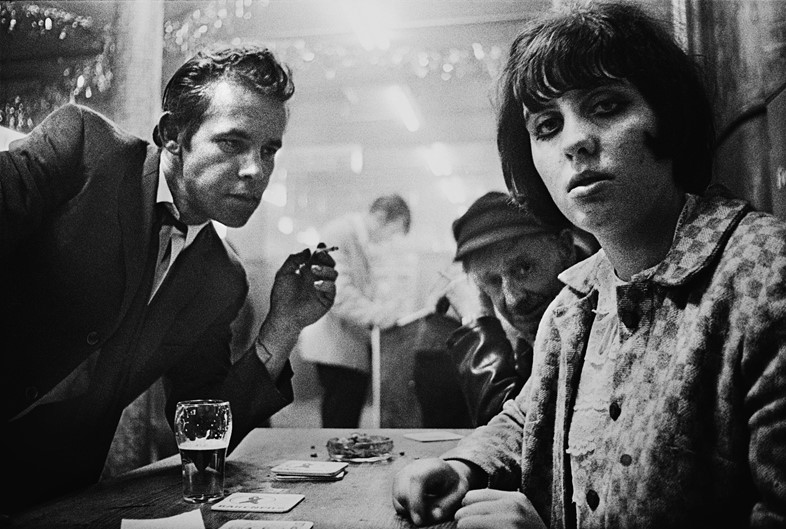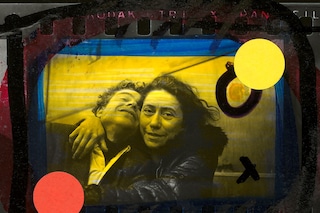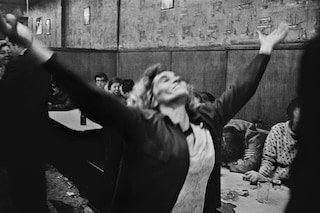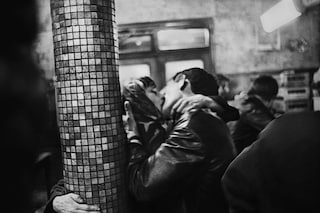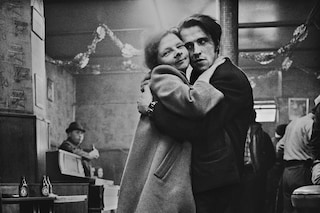Photographer Anders Petersen reflects on the original story behind his Cafe Lehmitz series: one of the most revered photo projects of all time
Wedged on Hamburg’s infamous Reeperbahn, in the thick of the city’s Red Light District, Cafe Lehmitz once stood as a raucous, no-frills dive bar. Surrounded by over 25 brothels, open around the clock, it was a late-night playground for local working people; home to a family of misfits. “The music was good,” Anders Petersen says softly. “The people were very kind… It was a very special place.”
It’s been half a century since the Swedish photographer – now 77 – shot the images that would go on to become Cafe Lehmitz, one of the most revered photobooks of all time. From sailors to sex workers, drifters to dock workers, the series documents the bar’s denizens in a viscerally intimate light: a raw, unbridled look at the underbelly of 1960s Hamburg.
Now, the photographs are being shown in a new light as part of Color Lehmitz, currently on show at New York’s Fotografiska. Curated by Angie Åström, the exhibition presents original contact sheets, unseen negatives and handwritten notes from Petersen, lifting the curtain on his meticulous artistic process as he’s sorted through, edited, and selected images over the past 50 years.
Petersen first visited St Pauli – the neighbourhood in which Cafe Lehmitz was located, otherwise known as ‘the most sinful mile’ – as a teenager studying German in 1962. He built relationships there, and five years later, after he had started making images, he felt himself drawn back. “I wanted to take photographs of my friends,” he says. “So I went out in Hamburg looking for them.” He was taken aback to find that almost all of them were dead.
“You live very short lives in St Pauli,” Petersen says, “especially if you’re using drugs, and drinking too much. These drugs, they make you thin. They mean you don’t sleep.” He is referring to Preludin, a stimulant drug once sold as an appetite suppressant, but widely abused throughout the 50s and 60s (The Beatles, also introduced to ‘prellies’ in Hamburg, were famous users in their early years).
Eventually, Petersen ran into an old friend, Gertrude, at the local Scandinavian bar. She told him to meet her the following night at 1AM in Cafe Lehmitz. But when Petersen arrived at the packed bar, camera in hand, Gertrude was nowhere to be seen. Amidst the sea of bodies and swirling cigarette smoke, Petersen found a seat, placing his camera on the edge of the table. Soon lost in the rush of dancing and debauchery, he didn’t notice the camera disappear – until, across the room, he spied a glint in the air.
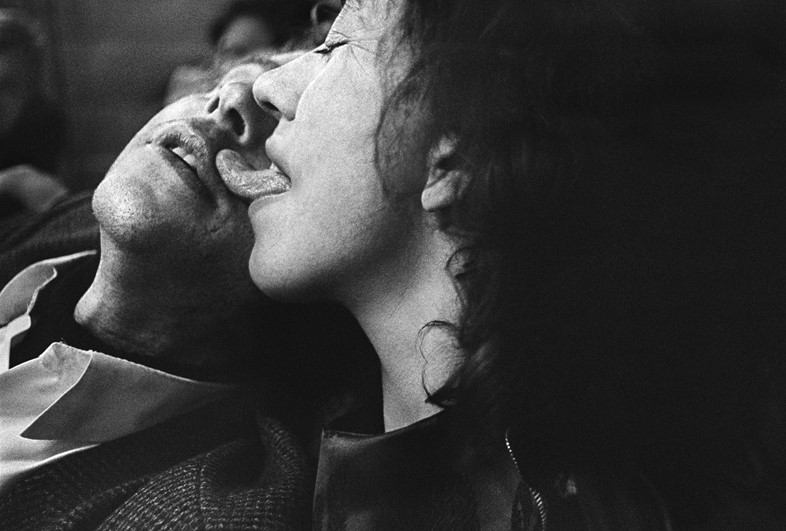
“I saw it, by chance, at the other end of this big room; people were throwing the camera to each other and taking pictures,” he remembers. Cordially, the photographer approached them, and joined in. “And that’s how it started.” Petersen would return to Hamburg numerous times over the next two and a half years, always going back to Cafe Lehmitz. “The people had a presence and a sincerity that I myself lacked,” he says. “You were allowed to be desperate, tender, sit by yourself, or become part of the community. In the vulnerability, there was a great deal of warmth and tolerance.”
Where Cafe Lehmitz felt intimate, Color Lehmitz – on show at Fotografiska NY until 6 March – endeavours to add another dimension: not simply inviting audiences to get to know the subjects, but to get under the skin of the artist, too. Audiences are let in on Petersen’s markings and brutal methods of crossing out what he deemed unfit; they are enlisted in his efforts to present his subjects as honestly, and humanely, as possible.
In the gallery, deep red walls conjure the effect of a dark room. Every direction teems with images: infinite characters, expressions and stories, suspended in time, and yet throbbing with the movement and dynamism of the original setting. Through the artist’s contact sheets, we are immersed not only in the scenes that have long been famous, but the countless moments that preceded and succeeded them. “It's a life, you see, not really a profession,” Petersen once told the Guardian. “This is why I take too many.”
Color Lehmitz is on show at Fotografiska NY until 6 March 2022
